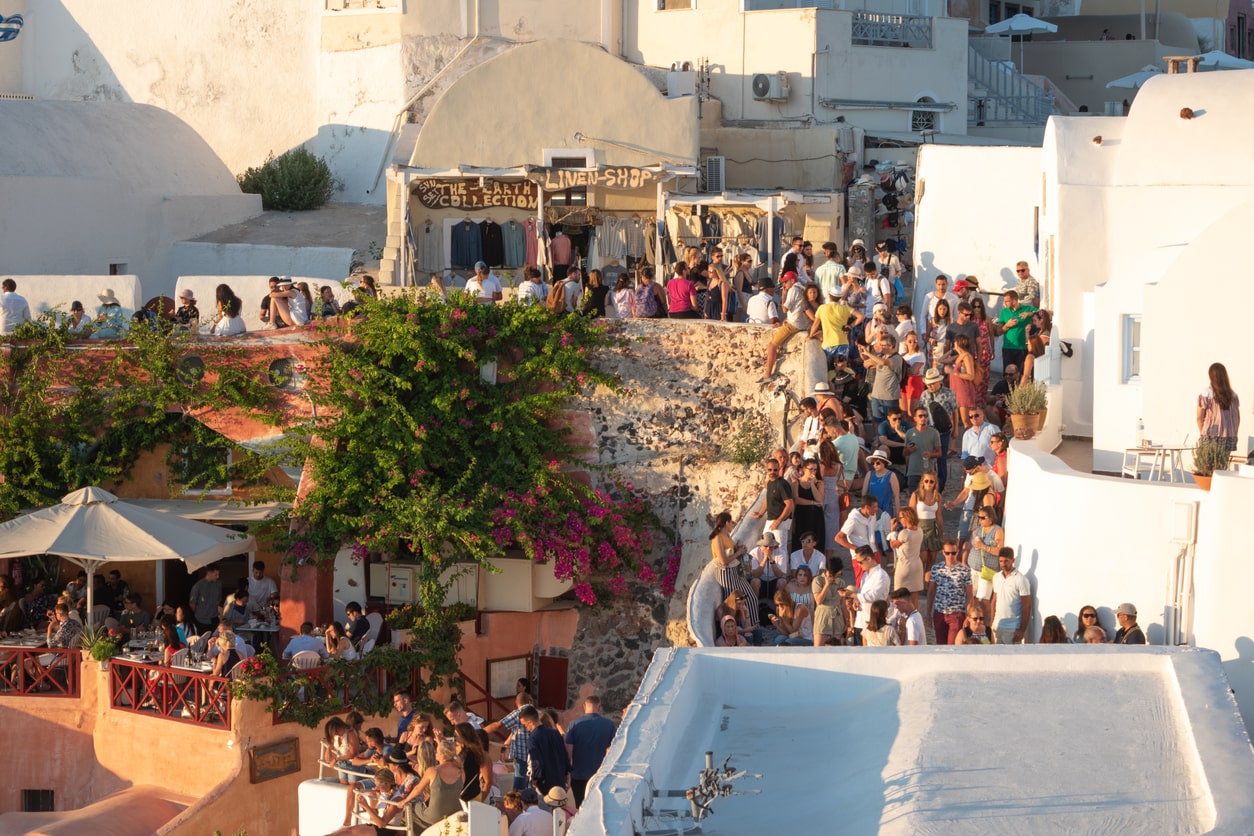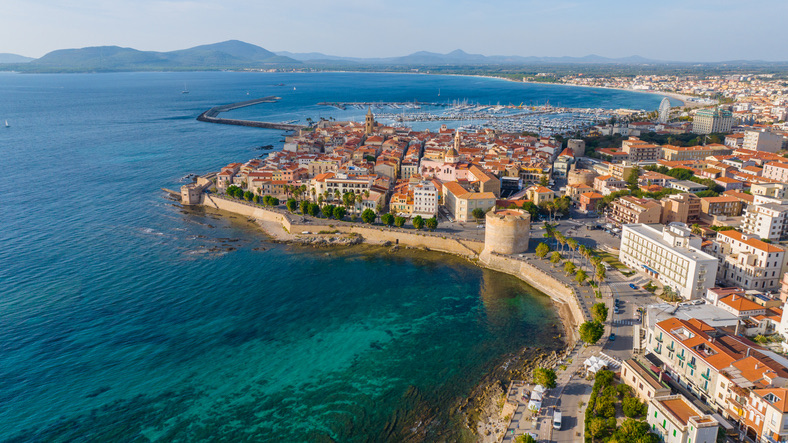According to the latest news, in Rome they are evaluating whether to return the Trevi Fountain can be visited by reservation and with a limited number of places.
The phenomenon of tourist overcrowding is increasingly in the spotlight worldwide, with its harmful consequences on historical sites, nature, landscapes, cities, as well as on the lives of residents and the visiting experience of tourists.
Although undeniable, the effects ofovertourism However, they are difficult to measure. For this reason Evaneos, company at the forefront of sustainable travel conducted research with consultancy Roland Berger and described the first sign of overtourism who provides gods objective criteria measure and evaluate the exposure of a destination to excessive tourist influx.
It is a useful tool for a more objective and precise understanding of the phenomenon by adopting specific solutions for each destination, which Evaneos is now making available to the entire tourism industry. The Index can in fact be downloaded and consulted freely on this link.


READ ALSO: Venice entrance ticket: how it works, who pays and who doesn't
Overtourism Index: The first index measuring the tourist overcrowding
The overtourism index is based on data collected from a sample of 70 destinations, among the top 100 in terms of number of visitors.
To measure the degree of exposure to overtourism, each destination was ranked from 1 to 5 based on 4 indicators objective: tourist density per capita, tourist density per km², seasonality and maturity of the host country in terms of sustainability (evaluation criterion which takes into account the social impact of tourism, the state of reception infrastructure, the development of transport and other aspects).
The first point that emerges from the analysis is that There is not just one type of “overtourism”. And each type of overexposure requires different solutions, as he comments. Aurelie SandlerCo-CEO of Evaneos
“For each type of overtourism, we must provide an appropriate response. An influx of tourists is not managed in the same way in a major European capital and in a seaside resort in summer. Far from pointing the finger at certain destinations among the most affected, this index allows us to think about the most appropriate solutions and to implement them.” he comments Aurelie SandlerCo-CEO of Evaneos.


Types of overtourism
The research identifies 3 main types of tourist overcrowding:
- The excess of tourism in seaside resorts
- excess of Summer visits to major European destinations
- excess of urban concentration
Beaches threatened by overtourism
Seaside destinations are the category most exposed to excess tourism, with an average index of 4 on a scale of 5. The cause is a particularly high rate of tourist arrivals (from 3.2 to 9.9 tourists per inhabitant) in relatively small areas (from 1,600 to 8,000 tourists per km²) and fragile areas.
The most “saturated” countries are Cyprus (4.4), Mauritius (4.2), Greece (4) And Croatia (3.8)All destinations are particularly vulnerable since on average 25% of their GDP depends on tourism.
The Evaneos study also offers some measures for each category.
For example, limiting the number of visitors per day or introducing paid entrance fees to protect the most popular and fragile sites, and spreading visitor flows throughout the year, favouring seaside destinations even in low season.
READ ALSO: The 16 most beautiful secret beaches in Europe to escape overtourism
Overtourism, the most popular European destinations
For the main European destinations, the excess of tourists is mainly a summer problem, with up to 43% of arrivals concentrated in the months of June, July and August.
With an average rating of 3.5/5, Spain (3.6), Italy (3.6)e Portugal (3.6), followed closely by France (3.3), are the countries most affected by summer overtourism.
Less economically dependent on tourism (9% of GDP on average) than seaside resorts, these destinations require above all tourism seasonal adjustment policies which allow the redistribution of flows over different or longer periods.
“It's about raising awareness among travelers and mobilizing the tourism industry to offer products adapted to seasonal pressure,” say the authors of the study.
Not only is it perfectly possible to visit Italy or France in April or September, but these months offer milder weather and a more comfortable trip with less tourist pressure.


Urban overtourism
The third type of overtourism is urban and mainly concerns large cities. European capitalsand calls for measures to decongest large cities and extend the economic benefits of tourism to peripheral regions.
According to the Overtourism Index measurement criteria, the cities most exposed to they are super tourism Copenhagen, followed by Amsterdam And Dublin.
For this category, the watchword is decentralization, that is to say the extension of the tourist flow towards less frequented cities and peripheral areas.
In the Netherlands, for example, focusing on an emerging city like Rotterdam can reduce the impact of tourism on Amsterdam.
Another solution for more balanced tourism distribution at the territorial level is to encourage travellers to stay longer and venture on alternative routes, against the trend of “hit and run”.
READ ALSO: Overtourism: These 10 European cities have more tourists than residents


Destinations at risk and those protected from overtourism
The Evaneos study then distinguishes two other categories: “destinations to watch” and those protected from the effects of overtourism.
The first are destinations that have a balanced tourist concentration over the year (between 24 and 28%), but which are becoming increasingly popular with tourists.
For these destinations with an average GDP share of 9%, a turning point has been reached – notably Morocco, Vietnam, Egypt And Iceland – The challenge is to anticipate and implement preventive measures to manage tourist density, both per km² (from 54 to 240 per km²) and in number of inhabitants (0.8 tourists per inhabitant).
Safe countries, on the other hand, are destinations that have a large territory and a balanced distribution of tourist arrivals, both per km² (from 16 to 80/km²) and per inhabitant (from 0.3 to 1 inhabitant).
A seasonality that varies from 24 to 28% during the year and an average index of 2.5/5: the first countries to be protected from excess tourism and its effects are the Canada (2,3), the UNITED STATES (1.7), theAustralia (1.5) and the Tanzania (1.8).
READ ALSO: Italy: 30 unusual (and low cost) destinations for the weekend
Stop offering summer trips to Santorini and Mykonos
“Overtourism is a phenomenon that Italians know well – he commented Highly BeautifulEvaneos Southern Europe country manager, during the presentation of the Index.
“This Index is a tool that serves the entire sector, because it allows us to objectify the analysis of the impact of overtourism and allows policy makers to make decisions based on facts. Above all, it defines an essential fact for us: industry players are the first actors in the fight against the phenomenon. Like travelers and the politicians who administer the territories concerned.”
Alongside the launch of the Overtourism Index, the platform for creating tailor-made trips in direct contact with local travel agents has announced its decision to stop selling holidays to Mykonos And Santorinitwo destinations where tourist pressure has become unsustainable. This choice is accompanied by the desire to invest in the promotion of alternative destinations, such as the Peloponnese or mainland Greece, to contribute to a better distribution of tourist flows in Greece.



